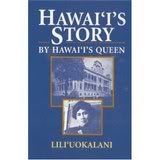FOR IMMEDIATE RELEASE:
Port Hope Ward Two residents demand Cameco Corporation stop dumping uranium into lake
PORT HOPE — Cameco Corporation must be made to stop dumping treated water still contaminated with uranium and arsenic into Lake Ontario from the Welcome Waste Management Facility, says a group of Ward Two residents.
The residents wrote Michael Binder, Ph.D, President and CEO of the Canadian Nuclear Safety Commission after receiving laboratory tests of water it found pouring out of a broken pipe on a public beach where Brand Creek empties into Lake Ontario.
The tests, done by Caduceon Environmental Laboratories in Peterborough, showed the water was contaminated with uranium and arsenic well above both the Interim Provincial Water Quality Objectives and the Canadian Drinking Water Guidelines “but within the limits allowable by the Canadian Nuclear Safety Committee (CNSC)”.
The pipe carries treated water from the Welcome facility maintained by Cameco under licence number WNSL-W1-2339.0/indf., which was renewed for an indefinite period in 2002 by the CNSC. The license contains “no limits” for the release of uranium into Lake Ontario, and it sets arsenic levels that are 100 times higher than Ontario’s water quality objectives.
The Welcome site contains old soil with elevated levels of uranium, arsenic and radium. The pipe dates from 1957, but since 1978 there has been a system in place that is supposed to treat the collected groundwater prior to its discharge into the lake and whether they are illegal given the “… current Ontario Water Quality Objectives”.
The broken pipe was noticed by a pilot flying low over Lake Ontario and he chose to contact a Lake Shore Road resident. The resident has reported the break to Cameco and the Ontario Ministry of the Environment and asked those agencies to investigate the questionable discharges.
Results of the tests paid for by local residents closely resemble Cameco’s own 2007 monitoring results from the Welcome pumping station, which are provided to the CNSC and the Municipality of Port Hope on a quarterly basis. The following table shows how those compare to federal and provincial water standards:
|
Interim Provincial Water Quality Objectives
|
Canadian Drinking Water Guidelines
|
Limits in CNSC license WNSL-W1-2339.0/indf.
|
Cameco monitoring July to September 2007
|
Resident water tests June-July 2008
(highest of 3)
|
|
|
Arsenic
|
.005 mg/L
|
.01 mg/L
|
.5 mg/L
|
<.005-.027
|
.02
|
|
Uranium
|
.005 mg/L
|
.02 mg/L
|
none
|
.03-.28
|
.246
|
(Interim Provincial Water Quality Objectives Canadian Drinking Water Guidelines Limits in CNSC license WNSL-W1-2339.0/indf. Cameco monitoring July to September 2007 Resident water tests June-July 2008
(highest of 3)
Arsenic .005 mg/L .01 mg/L .5 mg/L <.005-.027 .02
Uranium .005 mg/L .02 mg/L none .03-.28 .246 )
“Something has gone wrong here,” said Sanford Haskill, who owns waterfront property west of the broken pipe. “We are concerned that any toxic contamination is being allowed into the lake, but certainly it should not be happening just a few kilometers from Port Hope’s municipal water intake.”
He said the broken pipe provided the first opportunity for outsiders to test the effluent from Welcome. The pipe was built in 1956. “We hope the contamination indicates a very recent breakdown in the treatment system, and that Cameco quickly repairs it,” Haskill said. “God help the lake if it’s been going on for 40 or 50 years.”
Haskill said he is also concerned about Cameco’s lax scrutiny of its pipeline. “Winter ice is the only force that could have uprooted that pipe and sliced it open, and that means it has been spewing uranium and arsenic onto the beach for four months.
“It shouldn’t be left up to an individual to detect leaks from Cameco, or to uncover the inadequacies of the CNSC’s licenses. In light of what’s happened in the last year, this company simply has to do a better job of eliminating its pollution of Lake Ontario. Canadians and Americans who take their water from the lake should be outraged. This has got to stop.”
He said, he is also concerned that Cameco is not being forced to clean up the thousands of kilograms of uranium, arsenic and fluorides that have leaked into the ground underneath its UF6 plant. Some of it has reached the Lake, but the company says it doesn’t yet know how much.
This month marks the first anniversary of the discovery of that leak, and the plant has been closed ever since.
Contact: Sanford Haskill 905-885-8743.



 Posted by verbena19
Posted by verbena19 





































![Campaign for Innocent Victims In Conflict[CIVIC] CIVIC](http://i160.photobucket.com/albums/t193/Annamarie_033/CIVIClogo.gif)








![British daily newspaper Daily Mail [UK]](http://i160.photobucket.com/albums/t193/Annamarie_033/mHead2.gif)





































































































































You must be logged in to post a comment.